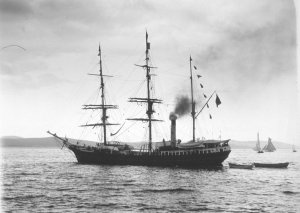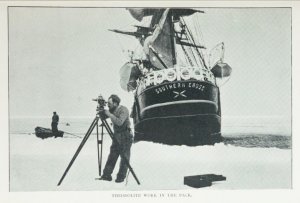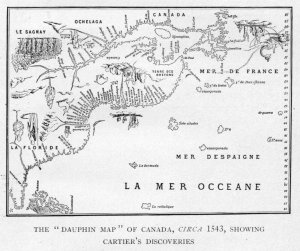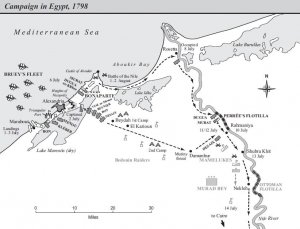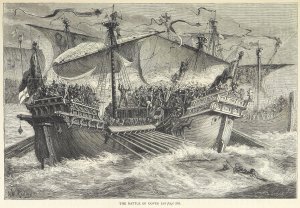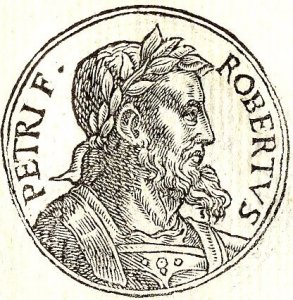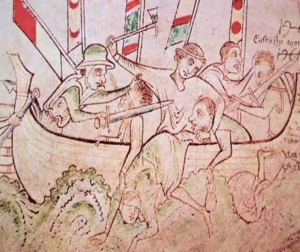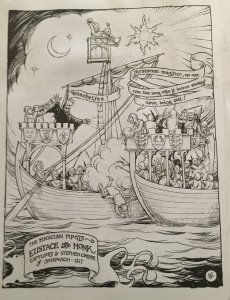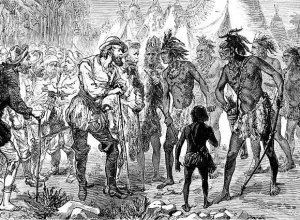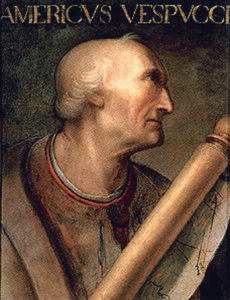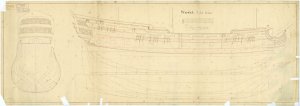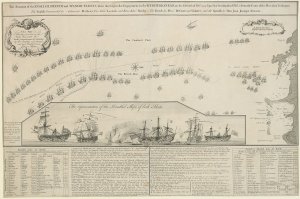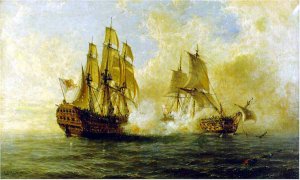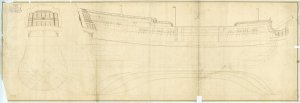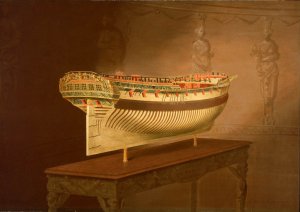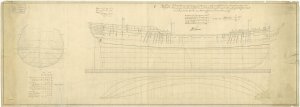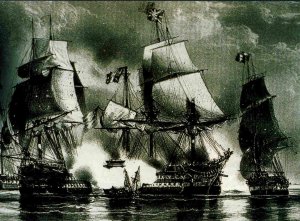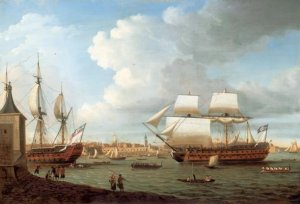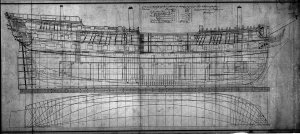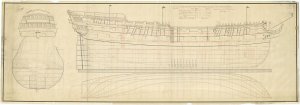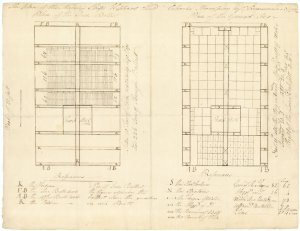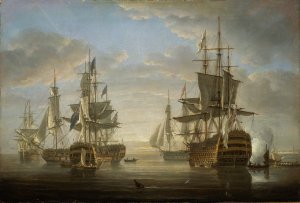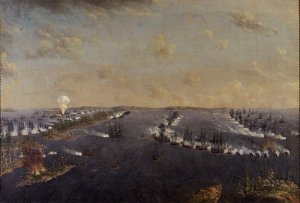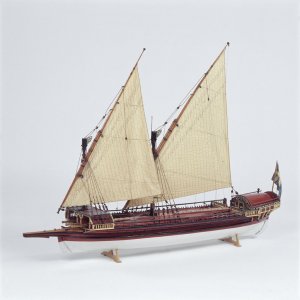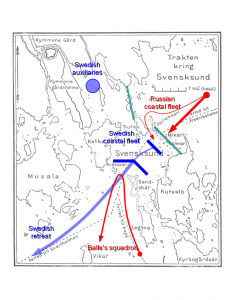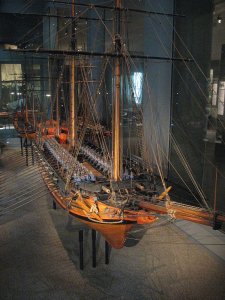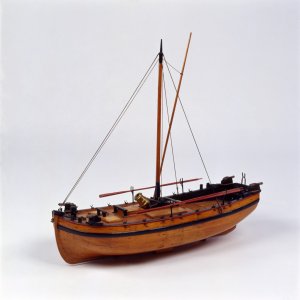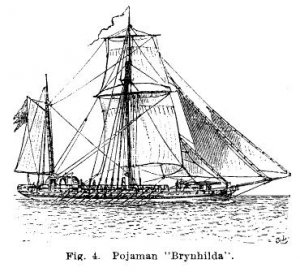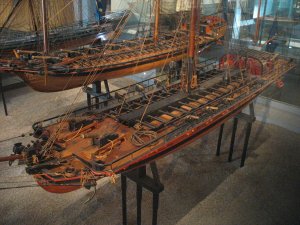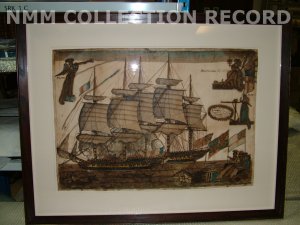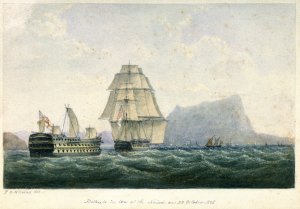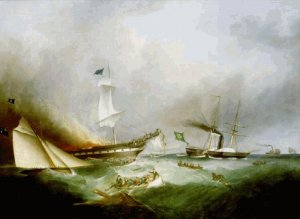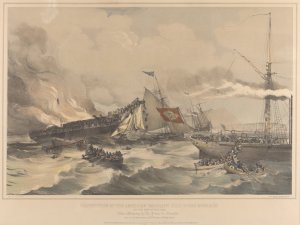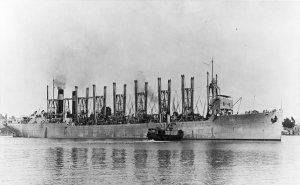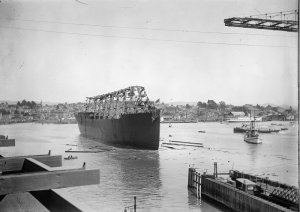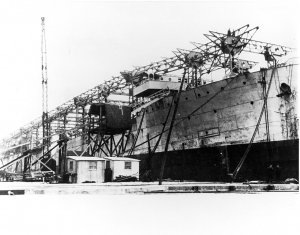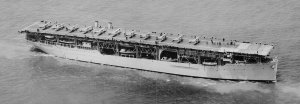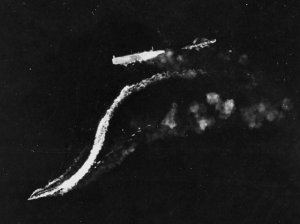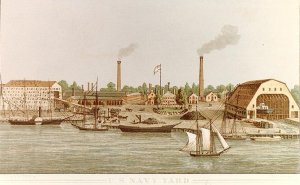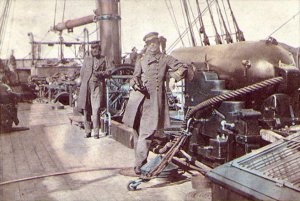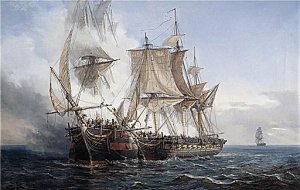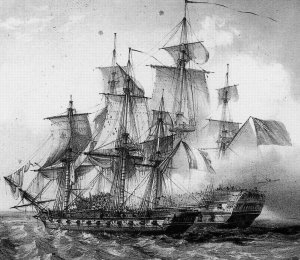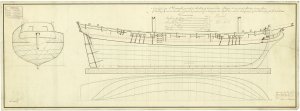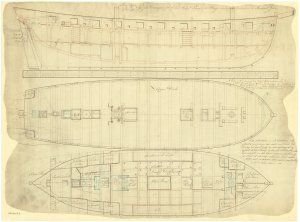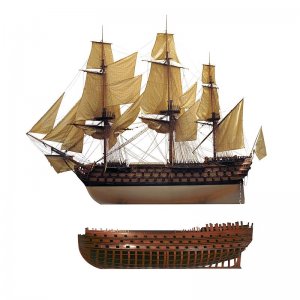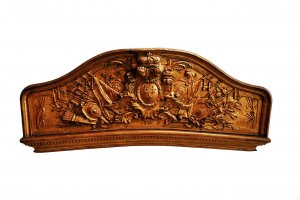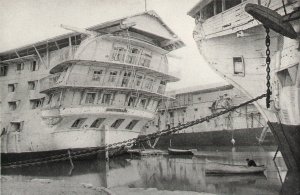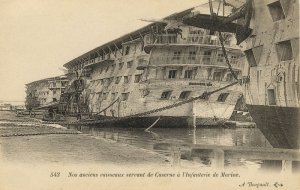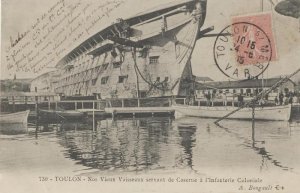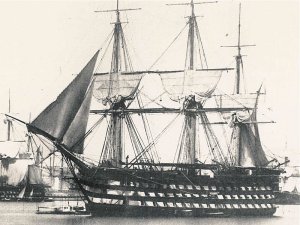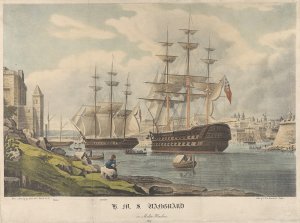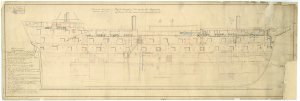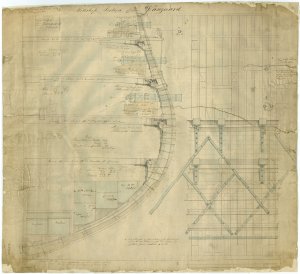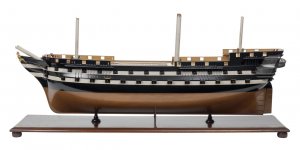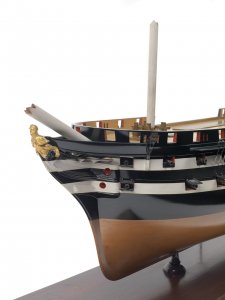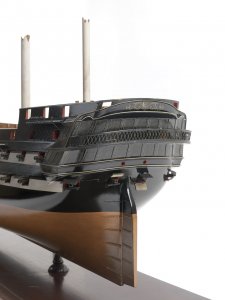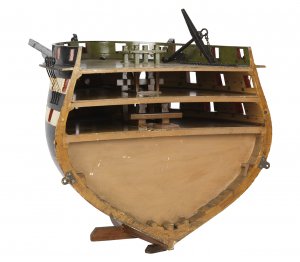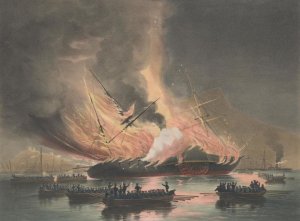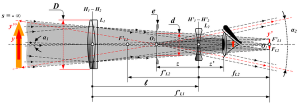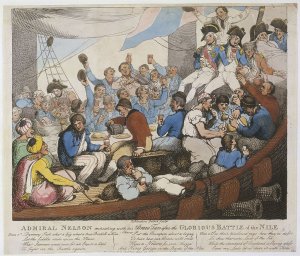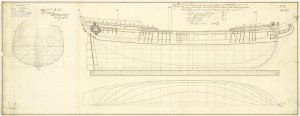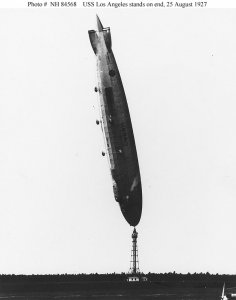Today in Naval History - Naval / Maritime Events in History
23 August 1890 - USS Baltimore (Cruiser #3) departs New York Harbor to return the remains of inventor John Ericsson to his native Sweden. For the US Navy, Ericssons most notable designs are for USS Princeton and USS Monitor.
John Ericsson (born Johan) (July 31, 1803 – March 8, 1889) was a Swedish-American inventor, active in England and the United States, and regarded as one of the most influential mechanical engineers ever. Ericsson collaborated on the design of the steam locomotive Novelty, which competed in the Rainhill Trials on the Liverpool and Manchester Railway, won by George Stephenson's Rocket. In America he designed the US Navy's first screw-propelled steam-frigate USS Princeton, in partnership with Captain Robert Stockton, who unjustly blamed him for a fatal accident. A new partnership with Cornelius H. DeLamater of the DeLamater Iron Works in New York resulted in the first armoured ship with a rotating turret, the USS Monitor, which dramatically saved the US naval blockading squadron from destruction by an ironclad Confederate vessel, CSS Virginia, at Hampton Roads in March 1862.
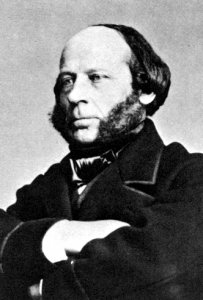
Ship connected Designs
Propeller design
He then improved ship design with two screw-propellers moving in different directions (as opposed to earlier tests with this technology, which used a single screw). However, the Admiralty disapproved of the invention, which led to the fortunate contact with the encouraging American captain Robert Stockton who had Ericsson design a propeller steamer for him and invited him to bring his invention to the United States of America, as it would supposedly be more welcomed in that place. As a result, Ericsson moved to New York in 1839. Stockton's plan was for Ericsson to oversee the development of a new class of frigate with Stockton using his considerable political connections to grease the wheels. Finally, after the succession to the Presidency by John Tyler, funds were allocated for a new design. Unfortunately they only received funding for a 700-ton sloop instead of a frigate. The sloop eventually became USS Princeton, named after Stockton's hometown.
The ship took about three years to complete and was perhaps the most advanced warship of its time. In addition to twin screw propellers, it was originally designed to mount a 12-inch muzzle-loading gun on a revolving pedestal. The gun had also been designed by Ericsson and used hoop construction to pre-tension the breech, adding to its strength and allowing safe use of a larger charge. Other innovations on the ship design included a collapsible funnel and an improved recoil system.
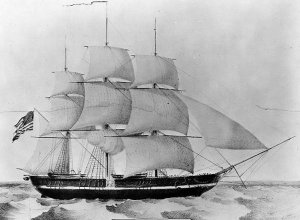
USS Princeton (1843)
The relations between Ericsson and Stockton had grown tense over time and, approaching the completion of the ship, Stockton began working to force Ericsson out of the project. Stockton carefully avoided letting outsiders know that Ericsson was the primary inventor.[citation needed] Stockton attempted to claim as much credit for himself as possible, even designing a second 12 in (300 mm) gun to be mounted in Princeton. Unfortunately, not understanding the design of the first gun (originally named "The Orator", renamed "The Oregon" by Stockton), the second gun was fatally flawed.
When launched, Princeton was an enormous success. On October 20, 1843, she won a speed trial against the paddle steamer SS Great Western, until then considered the fastest steamer afloat. Unfortunately, during a firing demonstration of Stockton's gun, the breech ruptured, killing Secretary of State Abel P. Upshur and Secretary of the Navy Thomas Walker Gilmer, as well as six others. Stockton attempted to deflect the blame onto Ericsson,[citation needed] with moderate success, despite the fact Ericsson's gun was sound and it was Stockton's gun that had failed. Stockton also refused to pay Ericsson, and by using his political connections, Stockton blocked the Navy from paying him. These actions led to Ericsson's later deep resentment toward the U.S. Navy
Ships
On September 26, 1854, Ericsson presented Napoleon III of France with drawings of iron-clad armored battle ships with a dome-shaped gun tower, and even though the French emperor praised this particular plan of an invention, he did nothing to bring it to practical application. In 1851 he designed the Caloric ship Ericsson.
USS Monitor
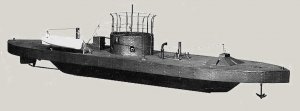
Replica of USS Monitor
Main article: USS Monitor
Shortly after the American Civil War broke out in 1861, the Confederacy began constructing an ironclad ram upon the hull of USS Merrimack which had been partially burned and then sunk by Federal troops before it was captured by forces loyal to the Commonwealth of Virginia. Nearly concurrently, the United States Congress had recommended in August 1861 that armored ships be built for the American Navy. Ericsson still had a dislike for the U.S. Navy, but he was nevertheless convinced by Lincoln's hard-working Secretary of the Navy Gideon Welles, and Cornelius Scranton Bushnell to submit an ironclad ship design to them. Ericsson later presented drawings of USS Monitor, a novel design of armored ship which included a rotating turret housing a pair of large cannons. Despite controversy over the unique design, based on Swedish lumber rafts, the keel was eventually laid down and the ironclad was launched on March 6, 1862. The ship went from plans to launch in approximately 100 days, an amazing achievement.
On March 8, the former USS Merrimack, rechristened CSS Virginia, was wreaking havoc on the wooden Union Blockading Squadron in Virginia, sinking the USS Congress and USS Cumberland. The Monitor appeared the next day, initiating the first battle between ironclad warships on March 9, 1862, at Hampton Roads, Virginia. The battle ended in a tactical stalemate between the two ironclad warships, neither of which appeared capable of sinking the other, but strategically saved the remaining Union fleet from defeat. After this, numerous monitors were built for the Union, including twin turret versions, and contributed greatly to the naval victory of the Union over the rebellious states. Despite their low draft and subsequent problems in navigating in high seas, many basic design elements of the Monitor class were copied in future warships by other designers and navies. The rotating turret in particular is considered one of the greatest technological advances in naval history, still found on warships today.
Later designs
Later Ericsson designed other naval vessels and weapons, including a type of torpedo and a destroyer, a torpedo boat that could fire a cannon from an underwater port. He also provided some technical support for John Philip Holland in his early submarine experiments. In the book Contributions to the Centennial Exhibition (1877, reprinted 1976) he presented his "sun engines", which collected solar heat for a hot air engine. One of these designs earned Ericsson additional income after being converted to work as a methane gas engine.
Death and ensuing controversy
Ericsson died on March 8, 1889, the anniversary of the Battle of Hampton Roads, in which his Monitor famously played a central role.
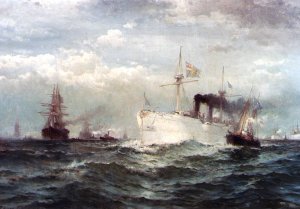
The White Squadron's Farewell Salute to the Body of John Ericsson, New York Bay, August 23, 1890

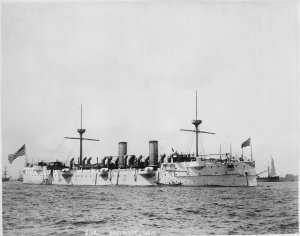

USS Essex / USS Natucket / USS Baltimore
His wish to be buried in his native land sparked a series of articles from New York Times alleging that, by selecting the third-rate USS Essex (1874) to transport his remains, the US Navy was not paying proper respect to Ericsson. The Navy responded and sent the remains on the USS Baltimore, escorted by other ships such as USS Nantucket. On August 23, 1890, the fleet departed with a twenty-one gun salute and the Swedish flag set at half mast. Around 100,000 people turned out for the funeral procession and departure ceremonies, including several veterans of the USS Monitor. Upon arrival in Stockholm, Sweden, the fleet was under presidential order to shoot a twenty-one gun salute to the Swedish flag, leave the remains, and immediately return to sea.
His final resting place is at Filipstad, in Värmland.
https://en.wikipedia.org/wiki/USS_Essex_(1874)
https://en.wikipedia.org/wiki/USS_Baltimore_(C-3)
https://en.wikipedia.org/wiki/USS_Nantucket_(1862)
23 August 1890 - USS Baltimore (Cruiser #3) departs New York Harbor to return the remains of inventor John Ericsson to his native Sweden. For the US Navy, Ericssons most notable designs are for USS Princeton and USS Monitor.
John Ericsson (born Johan) (July 31, 1803 – March 8, 1889) was a Swedish-American inventor, active in England and the United States, and regarded as one of the most influential mechanical engineers ever. Ericsson collaborated on the design of the steam locomotive Novelty, which competed in the Rainhill Trials on the Liverpool and Manchester Railway, won by George Stephenson's Rocket. In America he designed the US Navy's first screw-propelled steam-frigate USS Princeton, in partnership with Captain Robert Stockton, who unjustly blamed him for a fatal accident. A new partnership with Cornelius H. DeLamater of the DeLamater Iron Works in New York resulted in the first armoured ship with a rotating turret, the USS Monitor, which dramatically saved the US naval blockading squadron from destruction by an ironclad Confederate vessel, CSS Virginia, at Hampton Roads in March 1862.

Ship connected Designs
Propeller design
He then improved ship design with two screw-propellers moving in different directions (as opposed to earlier tests with this technology, which used a single screw). However, the Admiralty disapproved of the invention, which led to the fortunate contact with the encouraging American captain Robert Stockton who had Ericsson design a propeller steamer for him and invited him to bring his invention to the United States of America, as it would supposedly be more welcomed in that place. As a result, Ericsson moved to New York in 1839. Stockton's plan was for Ericsson to oversee the development of a new class of frigate with Stockton using his considerable political connections to grease the wheels. Finally, after the succession to the Presidency by John Tyler, funds were allocated for a new design. Unfortunately they only received funding for a 700-ton sloop instead of a frigate. The sloop eventually became USS Princeton, named after Stockton's hometown.
The ship took about three years to complete and was perhaps the most advanced warship of its time. In addition to twin screw propellers, it was originally designed to mount a 12-inch muzzle-loading gun on a revolving pedestal. The gun had also been designed by Ericsson and used hoop construction to pre-tension the breech, adding to its strength and allowing safe use of a larger charge. Other innovations on the ship design included a collapsible funnel and an improved recoil system.

USS Princeton (1843)
The relations between Ericsson and Stockton had grown tense over time and, approaching the completion of the ship, Stockton began working to force Ericsson out of the project. Stockton carefully avoided letting outsiders know that Ericsson was the primary inventor.[citation needed] Stockton attempted to claim as much credit for himself as possible, even designing a second 12 in (300 mm) gun to be mounted in Princeton. Unfortunately, not understanding the design of the first gun (originally named "The Orator", renamed "The Oregon" by Stockton), the second gun was fatally flawed.
When launched, Princeton was an enormous success. On October 20, 1843, she won a speed trial against the paddle steamer SS Great Western, until then considered the fastest steamer afloat. Unfortunately, during a firing demonstration of Stockton's gun, the breech ruptured, killing Secretary of State Abel P. Upshur and Secretary of the Navy Thomas Walker Gilmer, as well as six others. Stockton attempted to deflect the blame onto Ericsson,[citation needed] with moderate success, despite the fact Ericsson's gun was sound and it was Stockton's gun that had failed. Stockton also refused to pay Ericsson, and by using his political connections, Stockton blocked the Navy from paying him. These actions led to Ericsson's later deep resentment toward the U.S. Navy
Ships
On September 26, 1854, Ericsson presented Napoleon III of France with drawings of iron-clad armored battle ships with a dome-shaped gun tower, and even though the French emperor praised this particular plan of an invention, he did nothing to bring it to practical application. In 1851 he designed the Caloric ship Ericsson.
USS Monitor

Replica of USS Monitor
Main article: USS Monitor
Shortly after the American Civil War broke out in 1861, the Confederacy began constructing an ironclad ram upon the hull of USS Merrimack which had been partially burned and then sunk by Federal troops before it was captured by forces loyal to the Commonwealth of Virginia. Nearly concurrently, the United States Congress had recommended in August 1861 that armored ships be built for the American Navy. Ericsson still had a dislike for the U.S. Navy, but he was nevertheless convinced by Lincoln's hard-working Secretary of the Navy Gideon Welles, and Cornelius Scranton Bushnell to submit an ironclad ship design to them. Ericsson later presented drawings of USS Monitor, a novel design of armored ship which included a rotating turret housing a pair of large cannons. Despite controversy over the unique design, based on Swedish lumber rafts, the keel was eventually laid down and the ironclad was launched on March 6, 1862. The ship went from plans to launch in approximately 100 days, an amazing achievement.
On March 8, the former USS Merrimack, rechristened CSS Virginia, was wreaking havoc on the wooden Union Blockading Squadron in Virginia, sinking the USS Congress and USS Cumberland. The Monitor appeared the next day, initiating the first battle between ironclad warships on March 9, 1862, at Hampton Roads, Virginia. The battle ended in a tactical stalemate between the two ironclad warships, neither of which appeared capable of sinking the other, but strategically saved the remaining Union fleet from defeat. After this, numerous monitors were built for the Union, including twin turret versions, and contributed greatly to the naval victory of the Union over the rebellious states. Despite their low draft and subsequent problems in navigating in high seas, many basic design elements of the Monitor class were copied in future warships by other designers and navies. The rotating turret in particular is considered one of the greatest technological advances in naval history, still found on warships today.
Later designs
Later Ericsson designed other naval vessels and weapons, including a type of torpedo and a destroyer, a torpedo boat that could fire a cannon from an underwater port. He also provided some technical support for John Philip Holland in his early submarine experiments. In the book Contributions to the Centennial Exhibition (1877, reprinted 1976) he presented his "sun engines", which collected solar heat for a hot air engine. One of these designs earned Ericsson additional income after being converted to work as a methane gas engine.
Death and ensuing controversy
Ericsson died on March 8, 1889, the anniversary of the Battle of Hampton Roads, in which his Monitor famously played a central role.

The White Squadron's Farewell Salute to the Body of John Ericsson, New York Bay, August 23, 1890



USS Essex / USS Natucket / USS Baltimore
His wish to be buried in his native land sparked a series of articles from New York Times alleging that, by selecting the third-rate USS Essex (1874) to transport his remains, the US Navy was not paying proper respect to Ericsson. The Navy responded and sent the remains on the USS Baltimore, escorted by other ships such as USS Nantucket. On August 23, 1890, the fleet departed with a twenty-one gun salute and the Swedish flag set at half mast. Around 100,000 people turned out for the funeral procession and departure ceremonies, including several veterans of the USS Monitor. Upon arrival in Stockholm, Sweden, the fleet was under presidential order to shoot a twenty-one gun salute to the Swedish flag, leave the remains, and immediately return to sea.
His final resting place is at Filipstad, in Värmland.
https://en.wikipedia.org/wiki/USS_Essex_(1874)
https://en.wikipedia.org/wiki/USS_Baltimore_(C-3)
https://en.wikipedia.org/wiki/USS_Nantucket_(1862)




